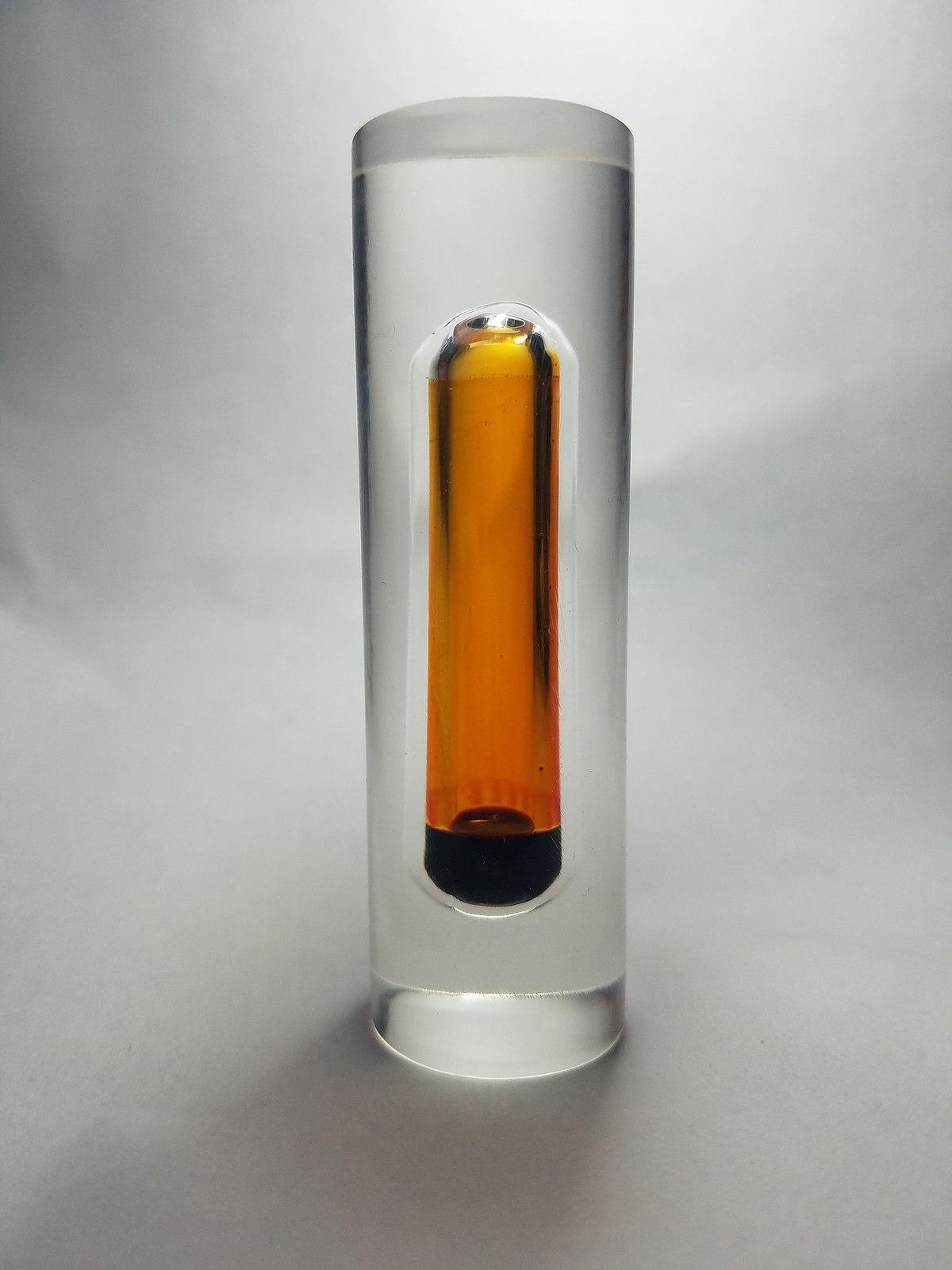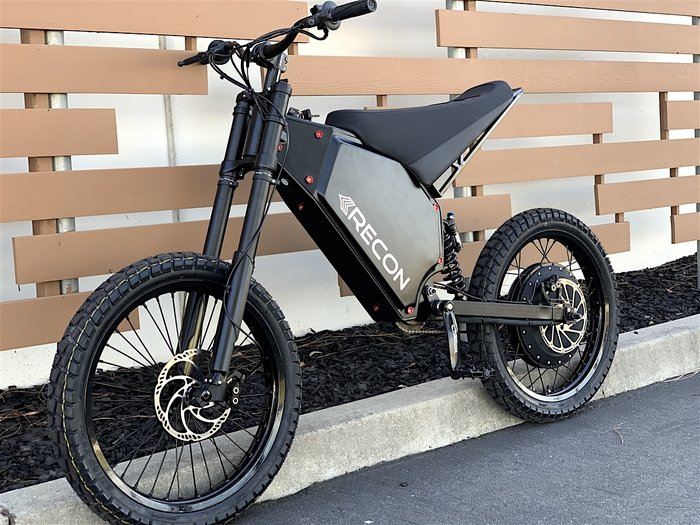
Those that form salts, part 4 Bromine
Another element from the halogen family is bromine. It occupies a place between chlorine and iodine (together forming the halogen subfamily), and its properties are average compared to its neighbors at the top and bottom of the group. However, anyone who thinks that this is an uninteresting element will be mistaken.
For example, bromine is the only liquid among non-metals, and its color also remains unique in the world of the elements. The main thing, however, is that interesting experiments can be carried out with it at home.
- Something smells bad in here! -
...... exclaimed the French chemist Joseph Gay-Lussacwhen in the summer of 1826, on behalf of the French Academy, he checked the report on the discovery of a new element. Its author was more widely unknown Antoine Balar. A year earlier, this 23-year-old apothecary had explored the possibility of making iodine from brewing solutions left over from the crystallization of rock salt from seawater (a method used to make salt in warm climates such as the French Mediterranean coast). Chlorine bubbled through the solution, displacing the iodine from its salt. He received the element, but noticed something else - a film of a yellowish liquid with a strong odor. He separated it and then merged it. The residue turned out to be a dark brown liquid, unlike any known substance. The test results of Balar showed that this is a new element. Therefore, he sent a report to the French Academy and waited for its verdict. After Balar's discovery was confirmed, a name was proposed for the element. bromine, derived from the Greek bromos, i.e. stench, because the smell of bromine is not pleasant (1).
Attention! Bad smell is not the only disadvantage of bromine. This element is just as harmful as the higher halogens, and, once on the skin, leaves wounds that are difficult to heal. Therefore, in no case should you get bromine in its pure form and avoid inhaling the smell of its solution.
sea water element
Sea water contains almost all of the bromine that is present on the globe. Exposure to chlorine causes the release of bromine, which volatilizes with the air used to blow the water. In the receiver, bromine is condensed and then purified by distillation. Due to cheaper competition and less reactivity, bromine is only used when needed. Many uses are gone, such as silver bromide in photography, leaded gasoline additives, and halon fire extinguishing agents. Bromine is a constituent of bromine-zinc batteries, and its compounds are used as drugs, dyes, additives to reduce the flammability of plastics, and plant protection products.
Chemically, bromine does not differ from other halogens: it forms strong hydrobromic acid HBr, salts with the bromine anion and some oxygen acids and their salts.
Bromine analyst
The reactions characteristic of the bromide anion are similar to the experiments carried out for chlorides. After adding a solution of silver nitrate AgNO3 a poorly soluble precipitate of AgBr precipitates, darkening in the light due to photochemical decomposition. The precipitate has a yellowish color (in contrast to white AgCl and yellow AgI) and is poorly soluble when NH ammonia solution is added.3aq (which distinguishes it from AgCl, which is highly soluble under these conditions) (2).
2. Comparison of the colors of silver halides - below you can see their decay after exposure to light.
The easiest way to detect bromides is to oxidize them and determine the presence of free bromine. For the test you will need: potassium bromide KBr, potassium permanganate KMnO4, sulfuric acid solution (VI) H2SO4 and an organic solvent (eg, paint thinner). Pour a small amount of KBr and KMnO solutions into a test tube.4and then a few drops of acid. The content immediately becomes yellowish (originally it was purple from the added potassium permanganate):
2KMno4 +10KBr +8H2SO4 → 2MnSO4 + 6 thousand2SO4 +5Br2 + 8H2About Add serving
3. Bromine extracted from the aqueous layer (bottom) colors the organic solvent layer red-brown (top).
solvent and shake the vial to mix the contents. After peeling off, you will see that the organic layer has taken on a brownish red color. Bromine dissolves better in non-polar liquids and goes from water to solvent. Observed phenomenon Extraction (3).
Bromine water at home
bromine water is an aqueous solution obtained industrially by dissolving bromine in water (about 3,6 g of bromine per 100 g of water). It is a reagent used as a mild oxidizing agent and to detect the unsaturated nature of organic compounds. However, free bromine is a dangerous substance, and besides, bromine water is unstable (bromine evaporates from solution and reacts with water). Therefore, it is best to get it a little workaround and immediately use it for experiments.
You have already learned the first method for detecting bromides: oxidation leading to the formation of free bromine. This time, add a few drops of H to the potassium bromide solution KBr in the flask.2SO4 and part of hydrogen peroxide (3% H2O2 used as a disinfectant). After a while, the mixture becomes yellowish:
2KBr+H2O2 +H2SO4 → K2SO4 + Br2 + 2H2O
The bromine water thus obtained is polluted, but X is the only concern.2O2. Therefore, it must be removed with manganese dioxide MnO.2which will decompose excess hydrogen peroxide. The easiest way to get the compound is from disposable cells (designated as R03, R06), where it is in the form of a dark mass filling a zinc cup. Place a pinch of the mass in the flask, and after the reaction, pour off the supernatant, and the reagent is ready.
Another method is the electrolysis of an aqueous solution of KBr. To obtain a relatively pure bromine solution, it is necessary to build a diaphragm electrolyzer, i.e. just divide the beaker with a suitable piece of cardboard (this way you will reduce the mixing of the reaction products on the electrodes). A graphite stick taken from the disposable cell 3 noted above will be used as a positive electrode, and an ordinary nail as a negative electrode. The power source is a 4,5 V coin cell battery. Pour the KBr solution into the beaker, insert the electrodes with wires attached, and connect the battery to the wires. Near the positive electrode, the solution will turn yellow (this is your bromine water), and hydrogen bubbles will form at the negative electrode (4). There is a strong smell of bromine above the glass. Draw up the solution with a syringe or pipette.
4. Homemade diaphragm cell on the left and the same cell in the production of bromine water (right). The reagent accumulates around the positive electrode; hydrogen bubbles are visible on the negative electrode.
You can store bromine water for a short time in a tightly closed container, protected from light and in a cool place, but it is better to try it right away. If you made starch iodine papers according to the recipe from the second section of the cycle, put a drop of bromine water on the paper. A dark spot will immediately appear, signaling the formation of free iodine:
2KI + Br.2 → i2 + KVg
Just as bromine is obtained from sea water by displacing it from bromides with a stronger oxidizing agent (), so bromine displaces iodine weaker than it from iodides (of course, chlorine will also displace iodine).
If you do not have starch iodine paper, pour a solution of potassium iodide into a test tube and add a few drops of bromine water. The solution darkens, and when a starch indicator (a suspension of potato flour in water) is added, it turns dark blue - the result indicates the appearance of free iodine (5).
5. Detection of bromine. Above - starch iodine paper, below - a solution of potassium iodide with a starch indicator (on the left - reagents for the reaction, on the right - the result of mixing the solutions).
Two kitchen experiments.
Of the many experiments with bromine water, I suggest two for which you will need reagents from the kitchen. In the first, take out a bottle of rapeseed oil,
7. Reaction of bromine water with vegetable oil. The top layer of oil is visible (left) and the bottom layer of water stained with bromine before the reaction (left). After the reaction (right), the aqueous layer became discolored.
sunflower or olive oil. Pour a small amount of vegetable oil into a test tube with bromine water and shake the contents so that the reagents mix well. As the labile emulsion breaks down, oil will be at the top (less dense than water) and bromine water at the bottom. However, the water layer has lost its yellowish color. This effect "prohibits" the aqueous solution and uses it to react with the components of the oil (6).
Vegetable oil contains quite a lot of unsaturated fatty acids (combining with glycerin to form fats). Bromine atoms are attached to double bonds in the molecules of these acids, forming the corresponding bromine derivatives. A change in the color of bromine water is an indication that unsaturated organic compounds are present in the test sample, i.e. compounds that have double or triple bonds between carbon atoms (7).
For the second kitchen experiment, prepare baking soda, i.e. sodium bicarbonate, NaHCO.3, and two sugars - glucose and fructose. You can buy soda and glucose at the grocery store, and fructose at the diabetic kiosk or health food store. Glucose and fructose form sucrose, which is a common sugar. In addition, they are very similar in properties and have the same total formula, and if this was not enough, they easily pass into each other. True, there are differences between them: fructose is sweeter than glucose, and in solution it turns the plane of light in the other direction. However, for identification, you will use the difference in chemical structure: glucose is an aldehyde, and fructose is a ketone.
7. Reaction of addition of bromine to binding
You may remember that reducing sugars are identified using the Trommer and Tollens tests. External view of brick Cu deposit2O (in the first attempt) or a silver mirror (in the second) indicates the presence of reducing compounds, such as aldehydes.
However, these attempts do not distinguish between glucose aldehyde and fructose ketone, since fructose will quickly change its structure in the reaction medium, turning into glucose. A thinner reagent is needed.
Halogens as
There is a group of chemical compounds that are similar in properties to similar compounds. They form acids of the general formula HX and salts with mononegative X– anions, and these acids are not formed from oxides. Examples of such pseudohalogens are the poisonous hydrocyanic acid HCN and the harmless thiocyanate HSCN. Some of them even form diatomic molecules, such as cyanogen (CN).2.
This is where bromine water comes into play. Make solutions: glucose with the addition of NaHCO3 and fructose, also with the addition of baking soda. Pour the prepared glucose solution into one test tube with bromine water, and the fructose solution into the other, also with bromine water. The difference is clearly visible: bromine water decolorized under the action of glucose solution, and fructose did not cause any changes. The two sugars can only be distinguished in a slightly alkaline environment (provided with sodium bicarbonate) and with a mild oxidizing agent, i.e. bromine water. The use of a strongly alkaline solution (necessary for the Trommer and Tollens tests) causes rapid conversion of one sugar into another and discoloration of bromine water also by fructose. If you want to know, repeat the test using sodium hydroxide instead of baking soda.

